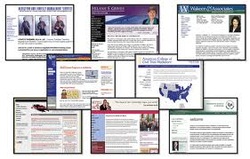
Some broad goals of usability could be: present the information to the user in a clear and concise way, give the correct choices to the users in an obvious way, remove any ambiguity regarding the consequences of an action (e.g. clicking on delete/remove/purchase), place important items in an appropriate area on a web page or a web application.
When you designed your web site, you want to promote it everywhere with big bold letters saying, "Hello everybody! Come and look at my web site! It is just great!" When you submit your web site to forums for web site reviews, you may write, "What do you think of my web site?"
This is the big mistake to ask someone to look at your web site. There is never a single answer. To understand if your web site meets its usability requirements, ask people to try it out. They should be able to answer the following questions: what is the purpose of this web site? what can I do here? what needs does it fulfill?
The 5 seconds test tool is one way to explore immediate impressions of the web site users. You can experiment by asking them what the site is about, to see if the site’s purpose is communicated clearly.
The biggest mistake is to believe that web site appearance matters the most. How it looks is only one part of the process. How it performs is another. What it can give back to site visitors and how effectively it conveys that information will matter even more.
Writing content for web users is an important task. The main goal of this task is the ease with which the web site content is read and understood by your users. When your content is highly readable, your audience is able to quickly digest the information you share with them.
Keep the web site content as concise as possible. Users have very short attention spans and they are not going to read articles thoroughly and in their entirety. So, get to the point as quickly as possible. Place your most important content high on the page. Think of a newspaper: the top story is always prominently displayed above the fold. Use headings to break up long text. Use bulleted lists where possible.
Format the text in such a way that it is easy to read it and just to scan a web page.Keep colors and typefaces consistent. Visitors should never click on an internal link in your site and wonder if they've left your web site. Choose your colors and fonts carefully and use them consistently throughout the site.
Keep page layout consistent. Use a Web site template to enforce a uniform page structure. Visitors should be able to predict the location of important page elements after visiting just one page in your site.
Design a clear and simple navigation system. a good navigation system should answer three questions: Where am I? Where have I been? Where can I go?
The navigation system should be in the same place on every page and have the same format. Visitors will get confused and frustrated if links appear and disappear unpredictably. Don't make your visitors guess where a link is going to take them. Visitors should be able to anticipate a link's destination by reading the text in the link or on the navigation button. Users don't have time or patience to guess.
Large or complex sites should always have a text-based site map in addition to text links. Every page should contain a text link to the site map. Lost visitors will use it to find their way, while search engines spiders will have reliable access to all your pages.
Include a home page link inside your main navigation system. Visitors may enter your site via an internal page, but hopefully they will want to head for the home page. Link the site logo to the home page. Most sites include their logo somewhere at the top of every page - generally in the top, left-hand corner. Visitors expect this logo to be a link to your site's home page. They'll often go there before looking for the home link in the navigation system.
Include a site search box. A robust site search feature helps visitors quickly locate the information they want. Make the search box prominent and be sure that it searches all of your site, and only your site.
Check your page display at in a number of different screen resolutions to make sure that your most important content is visible when the page loads.
Include a form for users' feedback on your site.
A good brand creates or reinforces a user's impression of the site. When your site is strongly branded, that means that visitors will think of you first when they go shopping for your product or service.
Conduct usability testing. Usability testing helps you to replicate the experience of the average web site user and correct problems before real users find them.
 RSS Feed
RSS Feed
